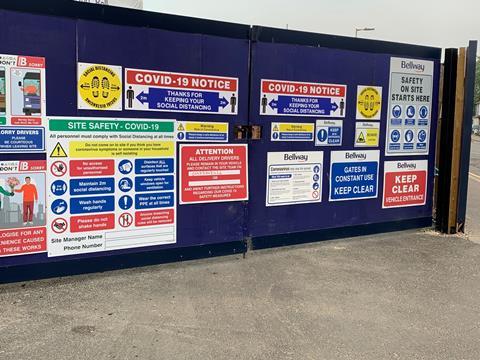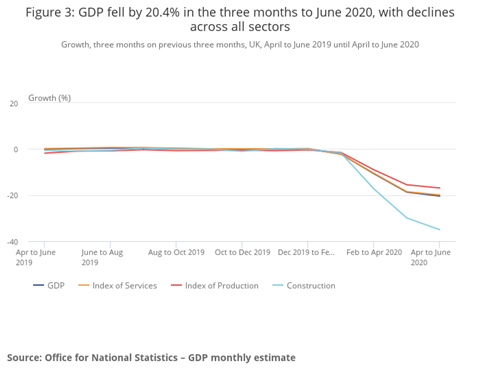First official figures for covid period show housing industry's contribution to steepest ever contraction in UK GDP
Housebuilding output dropped by more than 50% in the second quarter of the year, according to the first official figures covering the period most affected by the coronavirus lockdown of the economy.

The Office of National Statistics said that housebuilding output dropped by a record 52% overall in the second quarter of the year, making it the worst affected area of construction, and contributing to a 35% drop in overall construction work.
That meant the quarter from April to June saw a fall of £5.3bn in the value of work done compared to the £10.3bn done in the first three months of the year.
The quarterly fall masked a much steeper drop in April, prior to a recovery thereafter – with increases in output of 19% and 42% respectively in May and June from a very low base.
Despite this recovery, seasonally adjusted housebuilding output in June was still, at £2.1bn, a third below the level of £3.2bn seen in March, prior to lockdown.
The quarter also saw a record quarterly fall in new orders of 49%, falling to its lowest ever level - inflation adjusted - since the ONS started collecting the data in 1964.
The second quarter fall in construction output contributed to a fall in overall UK GDP of 20% - the second quarter of GDP contraction, putting the UK officially into recession with the steepest fall in output on record.
It is the first time the economy has been in recession since the 2008 and the second quarter fall is the biggest three month decline since comparable records began in 1955.
GDP started to rebound in June, growing 8.7% in the month as lockdown measures were gradually relaxed and pent-up demand fuelled a rise in consumer spending following a 2.4% rise in growth during May.
Jonathan Athow, ONS deputy national statistican for economic statistics, said: "The economy began to bounce back in June with shops reopening, factories beginning to ramp up production and housebuilding continuing to recover. Despite this, GDP in June still remains a sixth below its level in February, before the virus struck."
The ONS said industries hit the most were those exposed to public health restrictions and the effects of social distancing.

Of the main industrial sectors, only accommodation and food services, which fell by 86.7%, and other services, 45.4%, were more badly affected than construction.
Along with housing output specifically, construction overall began to bounce back in June, although the activity level is still 25% less when compared to February – the month before covid-19 restrictions were introduced.
Month-on-month, output in construction grew by 24% following growth of 7.6% in May and a record fall of 40% in April 2020.
This increase was driven by the return of housebuilding activity, and in particular private new housing, which grew by 42% after large declines in March and April. It contributed 18% of total construction activity.
The ONS said GDP estimates for June were subject to more uncertainty than usual as a result of the challenges it faced in collecting the data under government imposed public health restrictions.











No comments yet